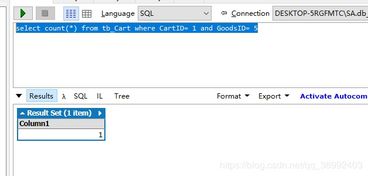Sqlcount条件统计
Title: Understanding SQL COUNT Function
SQL's `COUNT` function is a powerful tool for data analysis within relational databases. Whether you're a beginner or an experienced developer, understanding how to use `COUNT` effectively is essential for retrieving valuable insights from your data. Let's delve into the intricacies of this function, exploring its syntax, usage, and best practices.
Syntax
The syntax for the `COUNT` function in SQL is straightforward:
```sql
SELECT COUNT(column_name)
FROM table_name
WHERE conditions;
```
column_name
: The column or expression to count.
table_name
: The name of the table from which to retrieve data.
conditions
: Optional. Specifies any conditions that must be met for the rows to be counted.Usage
1.
Counting All Rows
To count all rows in a table, simply use `COUNT(*)`:
```sql
SELECT COUNT(*)
FROM table_name;
```
This returns the total number of rows in the table.
2.
Counting Specific Columns

You can count the occurrences of values in a specific column:
```sql
SELECT COUNT(column_name)
FROM table_name;
```
This counts the number of nonnull values in the specified column.
3.
Conditional Counting
Use the `WHERE` clause to specify conditions for counting:
```sql
SELECT COUNT(*)
FROM table_name
WHERE condition;
```
This counts only the rows that meet the specified conditions.
Examples
Let's consider a hypothetical table named `employees` with columns `employee_id`, `name`, `department`, and `salary`. Here are some examples:
1.
Counting All Employees:
```sql
SELECT COUNT(*)
FROM employees;
```
This returns the total number of employees in the table.
2.
Counting Employees in a Specific Department:
```sql
SELECT COUNT(*)
FROM employees
WHERE department = 'Sales';
```
This counts the employees who work in the Sales department.
3.
Counting NonNull Values:
```sql
SELECT COUNT(salary)
FROM employees;
```
This counts the number of employees with recorded salaries.
Best Practices
1.
Understand Data Distribution
: Before using `COUNT`, ensure you understand the distribution of data in the column you're counting. This prevents misinterpretation of results.2.
Handle NULL Values
: Depending on your requirements, decide whether to count NULL values or only nonnull values. Use `COUNT(*)` to count all rows, including NULLs, or `COUNT(column_name)` to exclude NULLs.3.
Optimize Performance
: Avoid using `COUNT(*)` on large tables without appropriate indexes, as it can lead to performance issues. Instead, use specific column counts whenever possible.4.
Use Aliases
: When using `COUNT(column_name)`, consider aliasing the result for readability:```sql
SELECT COUNT(salary) AS total_salaries
FROM employees;
```
Conclusion
The `COUNT` function in SQL is a versatile tool for counting rows and values in a table. By mastering its usage and following best practices, you can efficiently analyze data and extract valuable insights for your business or application.
Whether you're performing simple row counts or complex conditional counts, understanding how to leverage `COUNT` effectively empowers you to make informed decisions based on your data.











